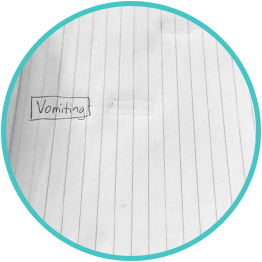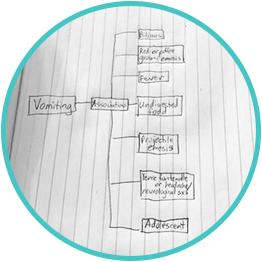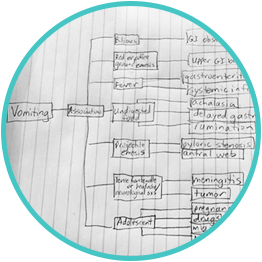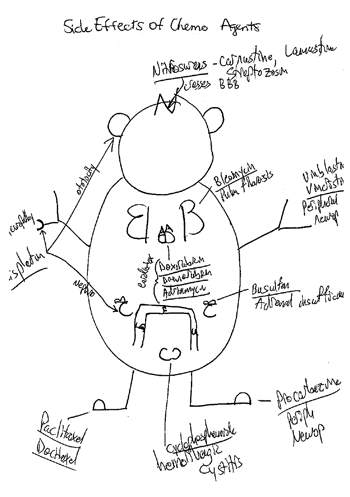
A concept map is a visual way to represent the information you are studying. It takes more effort than passive note-taking strategies such as highlighting or repeating text from a lecture. And “effortful” strategies help you remember more.
Concept maps were developed in 1972 as a way to understand changes in children’s knowledge of science. Based on the learning psychology of David Ausubel, the idea behind concept map note-taking is that learning happens when we assimilate new concepts into existing ones.
Concept maps represent the “cognitive structure” of learning. They help you connect new knowledge with old, creating a mental picture of a disease, syndrome, symptom, or system. These graphic representations can map out:
• Major concepts
• Principles
• Terminology
Unlike most notes and outlines, concept maps represent complex relationships among ideas in an associative rather than linear way.
Concept maps can be used to learn new information, as well as to organize and review the information you already know.
Keep in mind that there are many ways to draw a concept map. It doesn’t need to be perfect—it’s just a way to make notes for your own use and study.
Our examples are only meant to illustrate what is possible. Your own map might turn out very different. Just remember—if it helps you learn and remember, it is a successful map.
Here is an example. Let’s say you want to explore a symptom, such as vomiting. You have already taken the first step in building your map:
We suggest you start with a “focus question” for your map. In this case, it might be “What are the causes of vomiting?”
Coming up with a question has an added benefit: Not only does it help you draw your map, but it also helps to focus your reading as you search for the answer.

Where do you go next? Rather than trying to go straight to the answer to your question, choose which way you want to approach it.
Our mapper has chosen associations. You can also select examples, cause-and-effect relationships, hierarchy, or steps in a process. This is your learning tool, so you get to choose the focus.

Now that you’ve chosen something broad like “associations,” go ahead and list all the words that come to mind. You can put them in a list to the side first (what mappers call a “parking lot”) and then decide where they fit, or you can just add them to your map as you think of them.

In this case, each association signifies one or more possible causes or diagnoses. Your map is not necessarily done yet, unless you have gone as far as you want to go with your question.
There is room to add more levels, and connect parts of your map that are not yet connected, using “cross-links.” You will likely go through another draft or two before you decide your map is a keeper.

Here's an example of a concept map using a completely different approach.

In this case, rather than drawing the map in a horizontal configuration, the physician chose a human figure to help him remember the organs or body parts affected by chemotherapy. Notice the use of arrows and descriptive text written along the lines. Arrows and descriptive text can also be used to show causes and effects.
The point of concept maps is to illustrate connections and help you remember them. So draw your map in whatever way helps you most.
Feel free to get creative, use color, or choose a variety of shapes. As long as your map shows connections in a way that helps you understand and remember them, it’s doing its job.
Whether you're preparing for an upcoming board exam or brushing up on your knowledge, dig into StudyWise. It details the MedStudy Method, which is our prescription for the most effective way to truly learn medicine. Use the MedStudy Method—as outlined in your included StudyWise guide—to learn, retain, and easily recall all the medical information you need, whether you’re seeing patients or taking the boards.
Join the Newsletter
Sign up to receive special offers, product news and more from MedStudy.